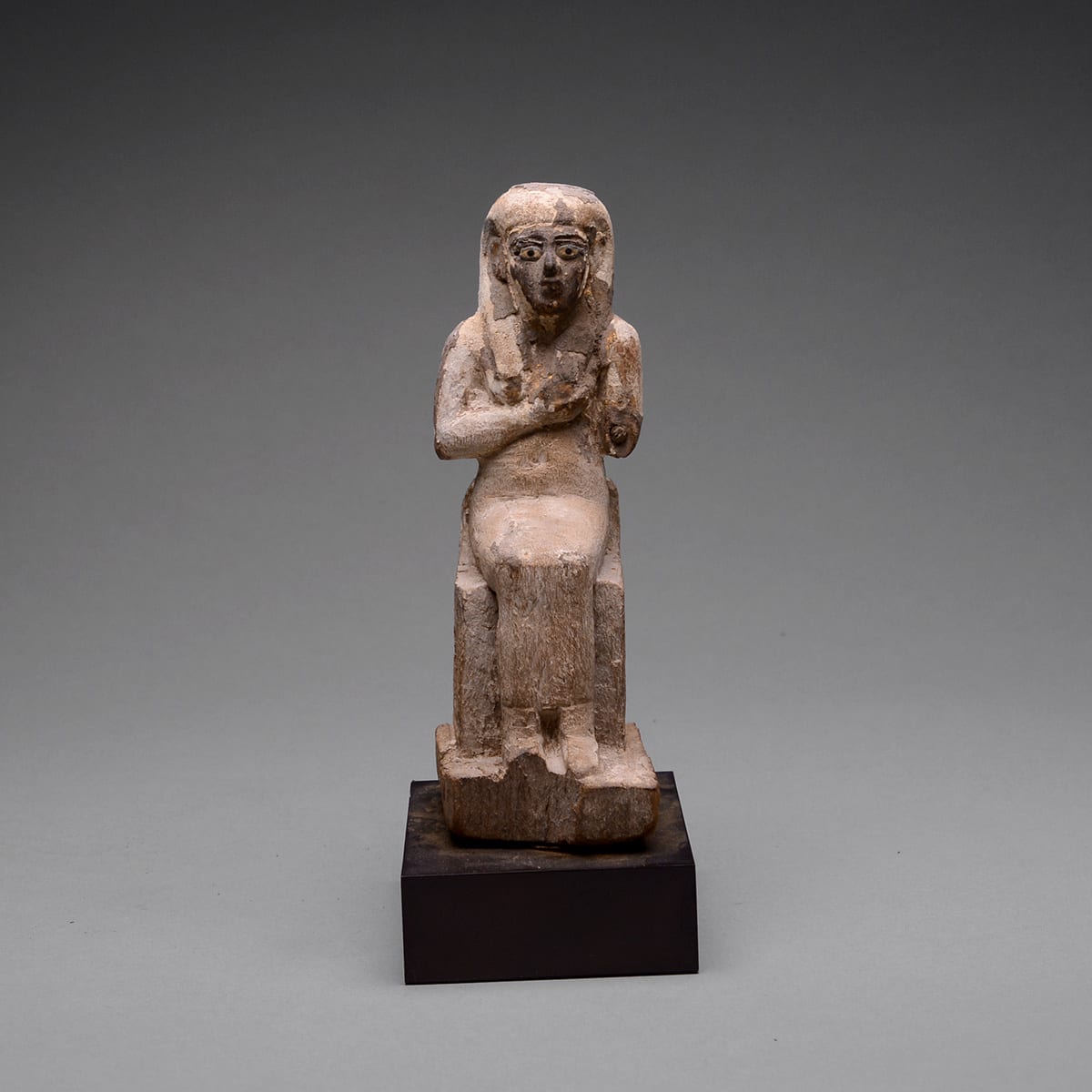Ptolemaic Period Wooden Sculpture of Isis, 300 BCE - 100 BCE
Wood
height 15.9 cm
height 6 1/4 in
height 6 1/4 in
X.0175
Further images
This wooden votive sculpture represents Isis, the bride of Osiris, the mother of Horus, the healer, the protector of women, the winged goddess able to grant immortality. The word, “Isis,”...
This wooden votive sculpture represents Isis, the bride of Osiris, the mother of Horus, the healer, the protector of women, the winged goddess able to grant immortality. The word, “Isis,” is actually the Greek version of her older Egyptian name, Aset or Eset, revealing that she remained a popular deity during the Ptolemaic period, associated with Demeter. Many centuries ago, this sculpture might have been found inside a temple, placed as an offering to the beloved goddess. She is depicted seated upon a throne, holding her right hand against her left breast in what might be interpreted as a gesture of fertility. Her eyes have been inlaid, enhancing the sense of realism. The legend of Osiris states that his brother Seth, overcome by jealousy, murdered him and tore his body into fourteen parts, scattering them across Egypt. Isis traversed the land and gathered all the parts of his body. She then cast a spell that resurrected her deceased husband for one night, during which their child, Horus, was conceived. Thus, Isis was one of the central figures of Egyptian religion, the healer, the giver of life. This gorgeous sculpture features traces of polychrome paint and gold leaf, suggesting that the work was once painted and gilt, revealing that is was a treasure even in its own day.







